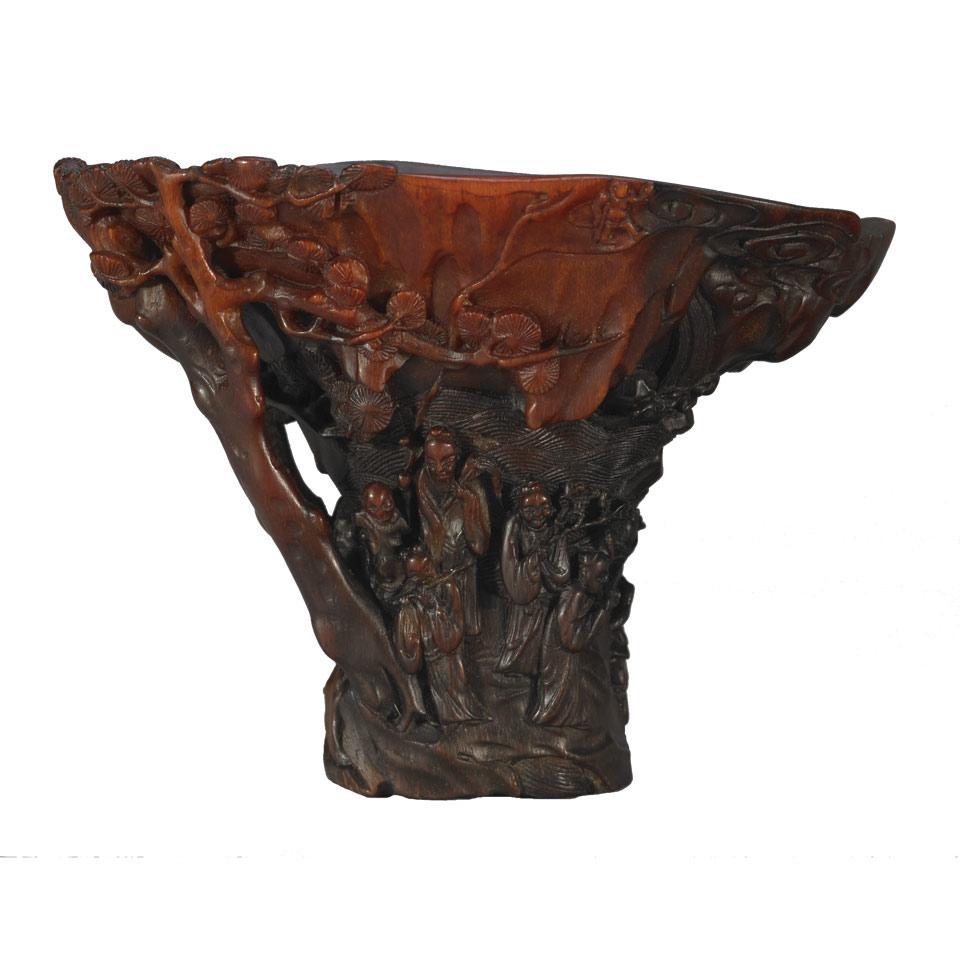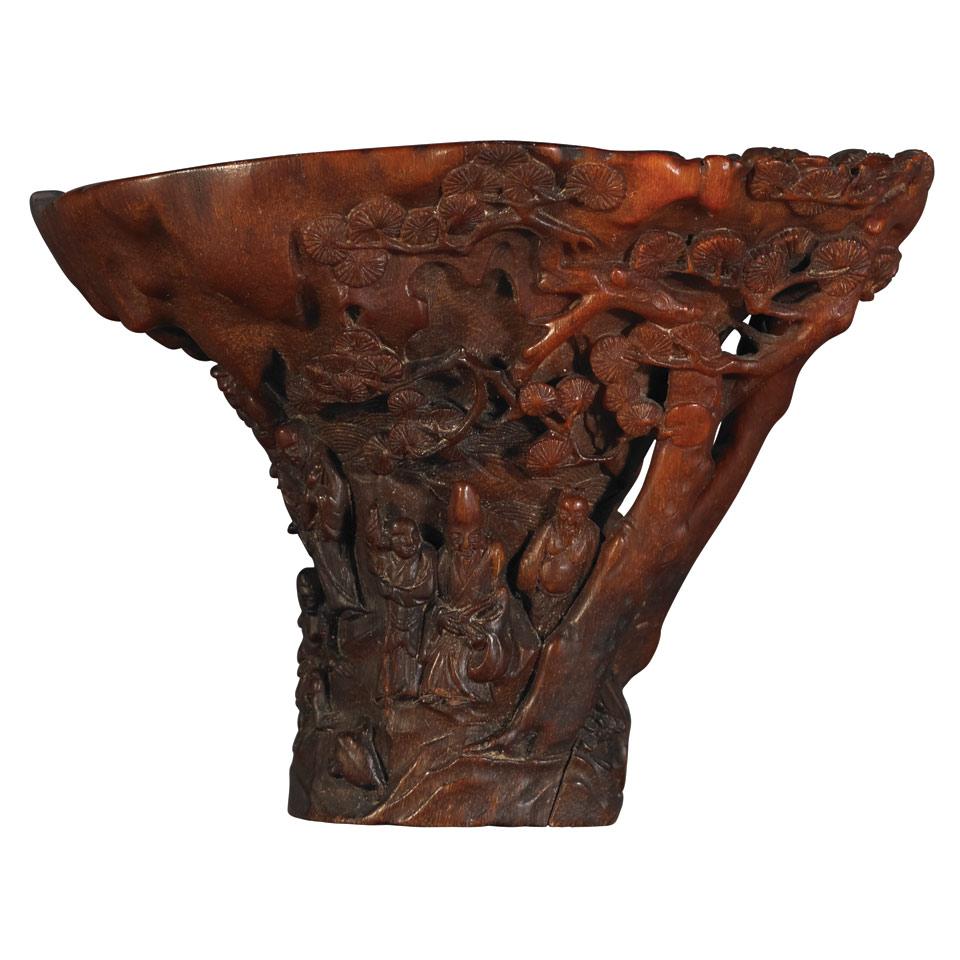Lot 591
Rhinoceros Horn Carved ‘Eight Immortals’ Libation Cup, Qing Dynasty, 17th/18th Century

Lot 591 Details
Rhinoceros Horn Carved ‘Eight Immortals’ Libation Cup, Qing Dynasty, 17th/18th Century
Finely carved in high relief, depicting a whimsical scene of the Eight Daoist Immortals relaxing in a mountainous setting, a small spirit escaping from Li Tieguai’s double gourd as he stands next to a large pine tree and watches with the other immortals as Liu Hai playfully jumps in front of his three-legged toad. The cup of a deep toffee tone with reddish highlights
4" x 5.6" — 10.2 x 14.1 cm.
6.9 oz. — 215 grams
Estimate $30,000-$40,000
Additional Images

Provenance:
Acquired in London, England, during the 1960’s
Note:
Together the Eight (Daoist) Immortals, a group of individuals who each attained immortality during the Tang and Song dynasties, serve as a symbol of longevity and prosperity. Consisting of seven males and one female, the deities carry an additional symbolic meaning, each representing a stage in life including poverty, wealth, aristocracy, plebianism, age, youth, masculinity and femininity. The figure of Han Zhongli for instance, patron of the military and identifiable by his large fan or feather is regarded as a symbol of masculinity while He Xiangu, the sole woman within the group, always portrayed with a lotus, peach or flowering branch is a representation of femininity. Meanwhile patron of the sick and ill, Li Tieguai, shown with raggedy clothing, a crutch and double gourd, serves as a symbol of poverty and is contrasted by Han Xiangzi, sometimes referred to as Liu Hai, grandnephew of a 9th century scholar, with no understanding of the value of money, embodying the concept of wealth and excess
CONDITION DETAILS
PLEASE NOTE THIS IS A PREMIUM LOT. ANY BIDDING ON THIS LOT REQUIRES PRE-APPROVAL FROM THE ASIAN ART DEPARTMENT AT LEAST 48 HOURS PRIOR TO THE SALE. Please contact [email protected] or 416.847.6185 for more information



